Butterfly Pea Flower and Unique Anthocyanins
Butterfly Pea Flower and Unique Anthocyanins
Anthocyanins present in edible fruits, vegetables and flowers have protective effects against diseases, especially cardiovascular disease, certain types of cancer, and against several chronic diseases, such as hyperglycemia. Anthocyanins also improve vision. Because of their benefits, anthocyanins are becoming increasingly commercializedand used in foods. Anthocyanins are an important class of water-soluble pigments belonging to the flavonoid family
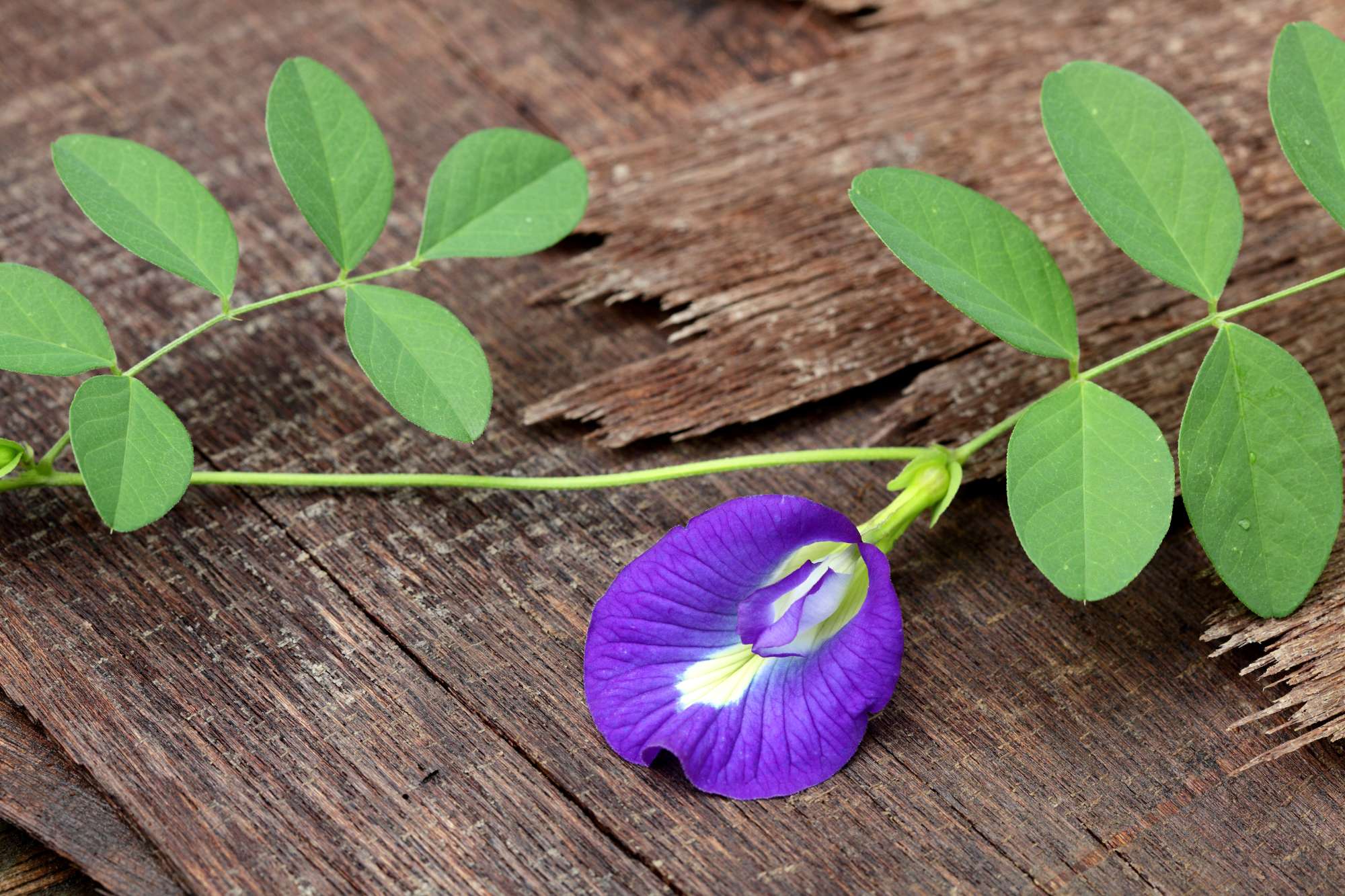
Butterfly Pea Flower also known by its scientific name is Clitoria ternatea that from a plant common to most South East Asian countries. Its unique blue color shows that it is very rich of various anthocyanins, the antioxidant compounds.
Butterfly pea flower is known for its potential medicinal properties. In traditional Ayurvedic medicine, it is believed to have various qualities that include cognitive enhancement, memory memory enhancing, antistress, anxiolytic, antidepressant, anticonvulsant, tranquilizing, and sedative propertiess. In traditional Chinese medicine, the plant has been ascribed properties affecting female libido.
And by Its unique blue color, in culinary, in Southeast Asia, the flower is used as a natural food colouring to colour their foods, cocktail, drinks... It also can used to dye natural fibers.
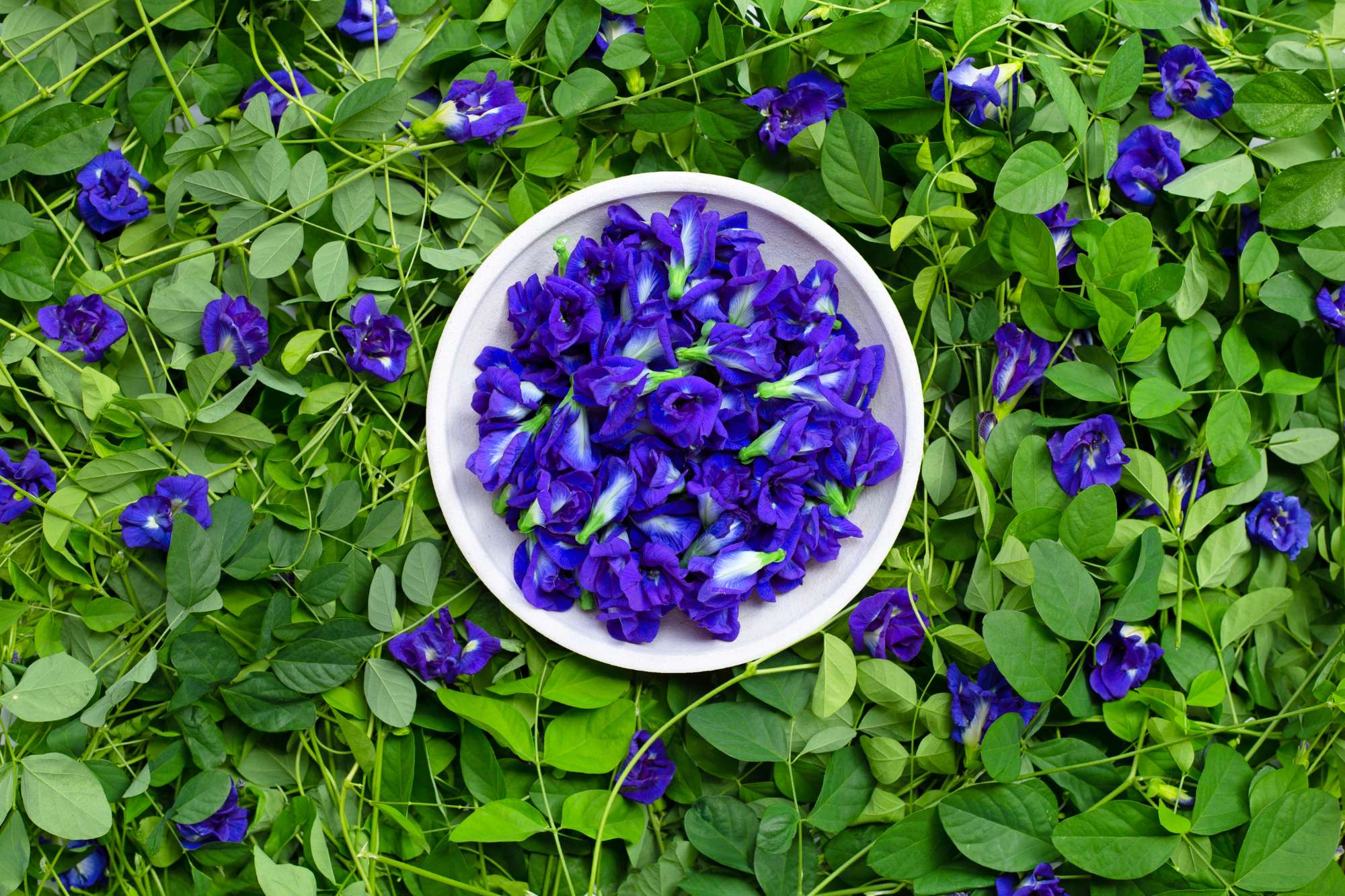
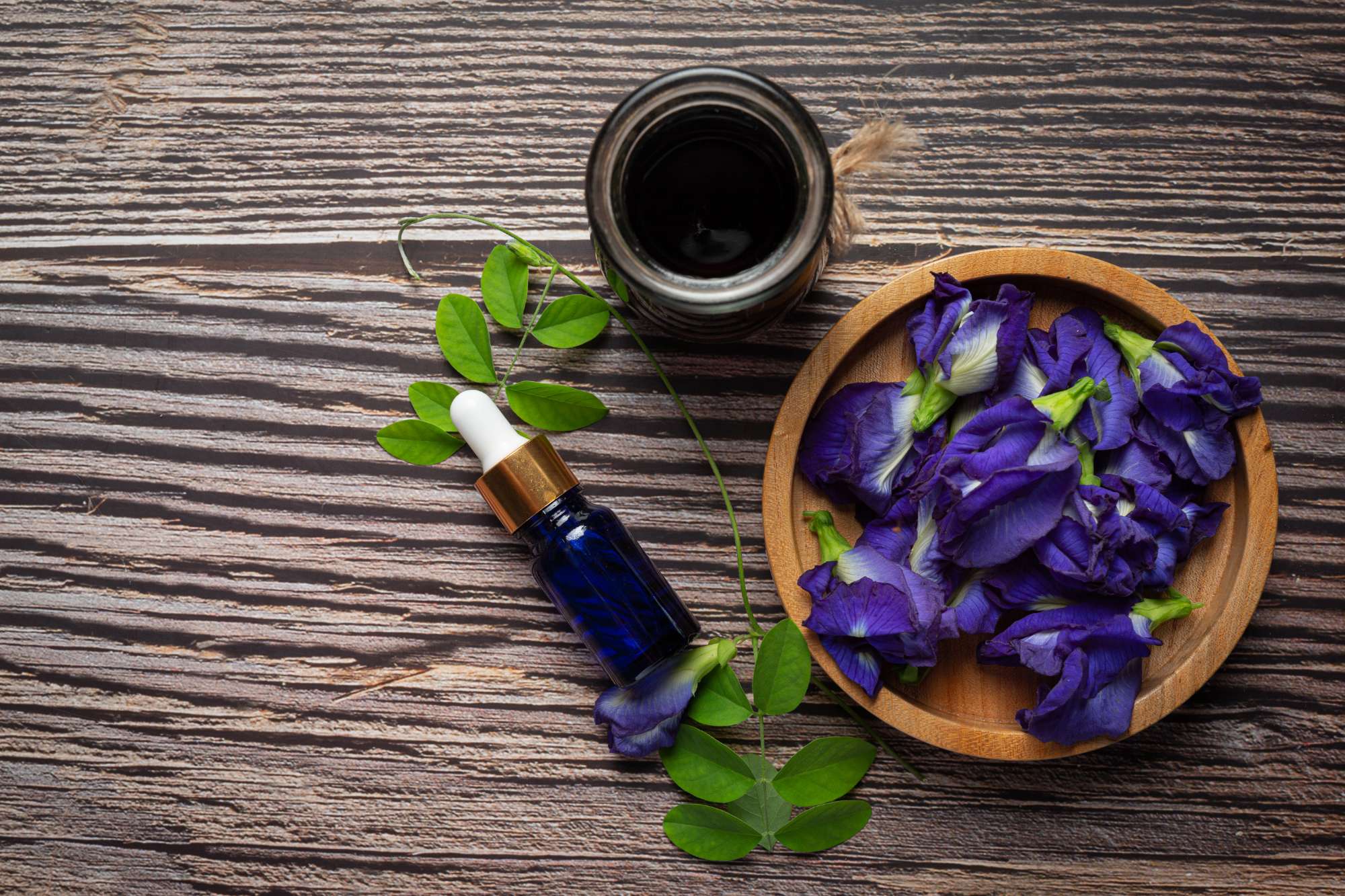
Nutrients in butterfly pea flower
Butterfly pea flowers are rich in anthocyanin compounds called ternatins, which give the plant its vibrant hue. Test-tube studies suggest that ternatins can alleviate inflammation and may prevent cancer cell growth. Additionally, the plant contains several other antioxidants, including:
Kaemphferol. This compound has been studied extensively for its cancer-fighting properties. Test-tube studies indicate that it may kill off cancer cells.
p-Coumaric acid. Some research suggests that p-coumaric acid could have anti-inflammatory, antimicrobial, and antiviral effects, which may help protect against disease.
Delphinidin-3,5-glucoside. According to one study, this antioxidant may help stimulate immune function and cause cell death in colorectal cancer cells.
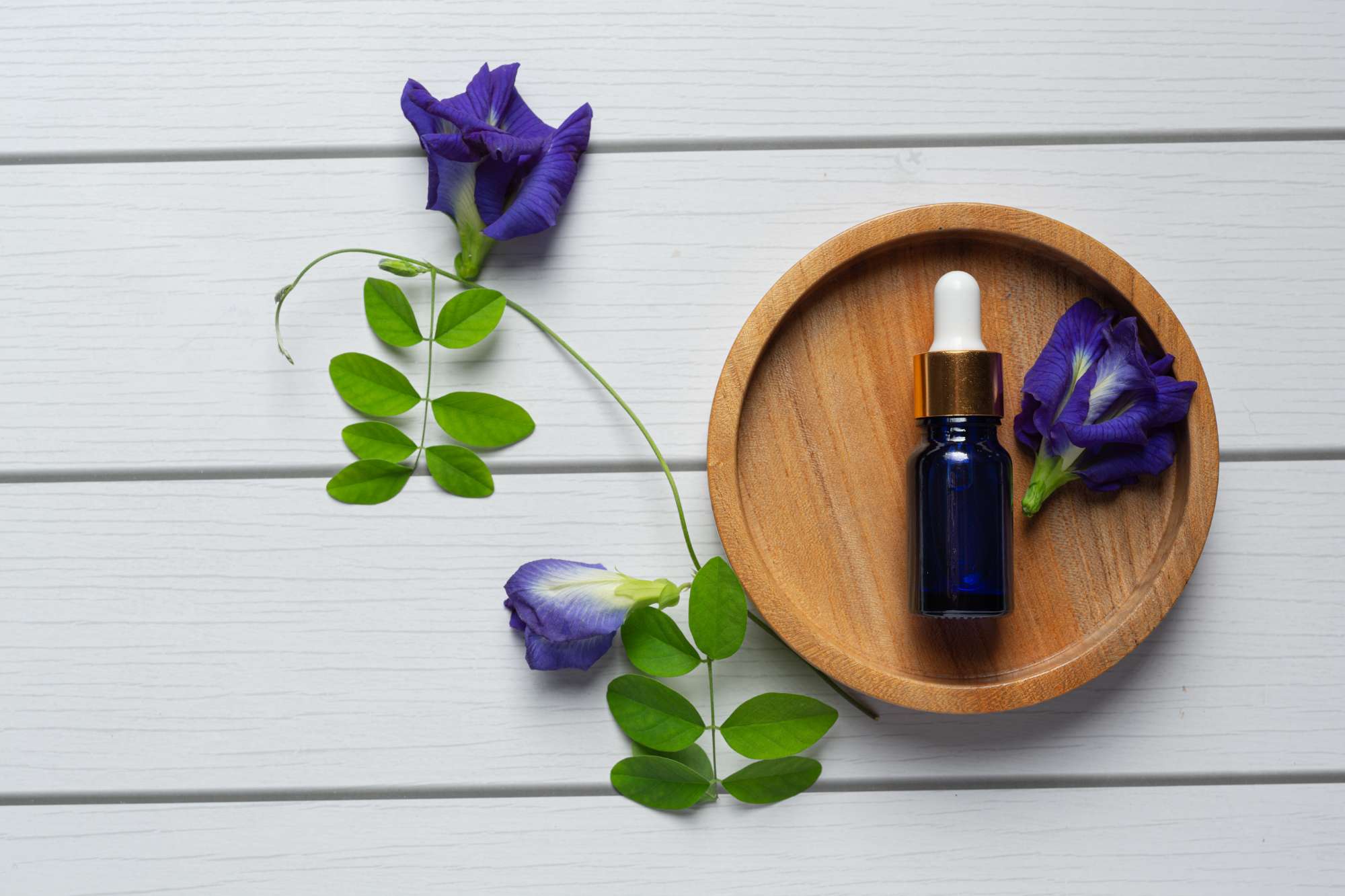
HEALTH BENEFITS OF BUTTERFLY PEA FLOWERSupports skin and hair health
Cosmetic manufacturers boast about butterfly pea flowers’ effectiveness in everything from skin care serums to hair mists and shampoos.
According to a 2021 study, butterfly pea extract may increase your skin hydration by 70% one hour after topical application. A 2012 animal study found that butterfly pea extract may be more effective at promoting hair growth than minoxidil, which is a common product used to treat hair loss. Butterfly pea flower contains a rich array of antioxidants, which may also be beneficial for promoting hair and skin health. Still, more research is needed to fully understand how butterfly pea flower may affect your hair and skin.
May promote weight loss
Some studies even suggest that butterfly pea flower may aid in weight loss efforts.
One test-tube study suggests that butterfly pea flower extract may slow the formation of fat cells by regulating certain pathways involved in cell progression. Some older test-tube and animal studies have found that ternatins, which are found in butterfly pea flower, may also block the synthesis of fat cells in your body. Further research is necessary to evaluate how butterfly pea flower may impact your weight, especially when worked into your diet.
.jpg)
Stabilizes blood sugar levels
Studies indicate that butterfly pea flower may reduce your risk of diabetes and related symptoms.
For instance, one study in 15 men showed that drinking a beverage containing butterfly pea flower extract increased antioxidant levels and reduced blood sugar and insulin levels, despite the sugar levels in the drink. Moreover, an animal study found that administering butterfly pea flower extract to rats with diabetes significantly reduced their blood sugar levels compared with a control group. One study even reported that the antioxidant properties of butterfly pea flower may protect against cell damage and complications related to diabetes. However, additional studies are needed to determine how butterfly pea flower may impact your long-term blood sugar control.
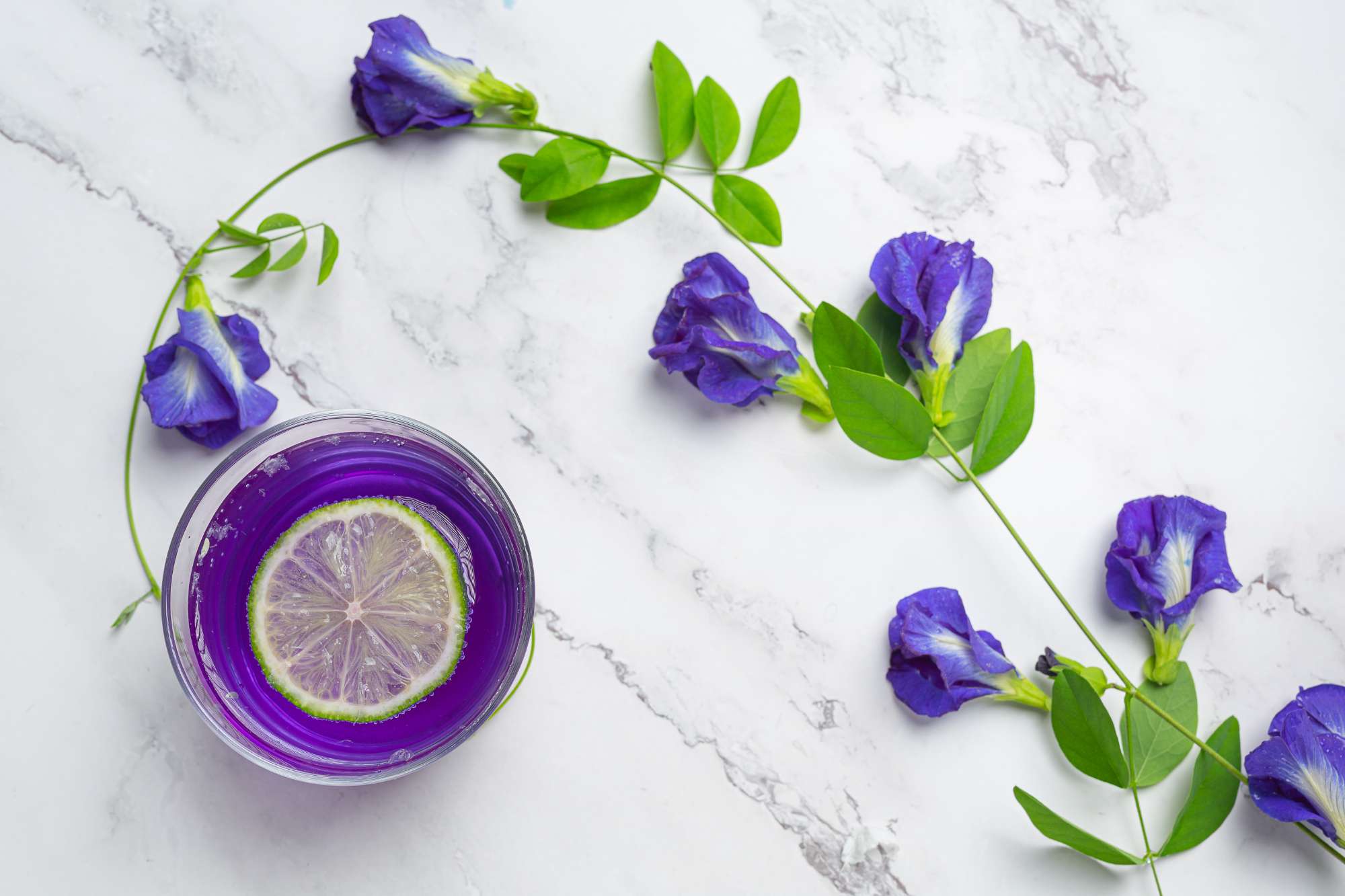
How to use butterfly pea flower
Butterfly pea flower is found in many cosmetic products, including hair conditioners, toners, shampoos and masks.
You can also use fresh flowers steeped in warm water, or use dried flowers, also known as butterfly pea flower tea, make as make other tea, you can add 1 teaspoon (4 grams) of dried flowers to 1 cup (240 mL) of hot water, soak for about 10-15 minutes and then enjoy hot or cold with ice.
You can also add a little lemon juice, lime juice or honey to enhance the taste. The acidity of citrus fruits can also give the drink a deep purple color, thanks to the naturally occurring ternatins in the plant.
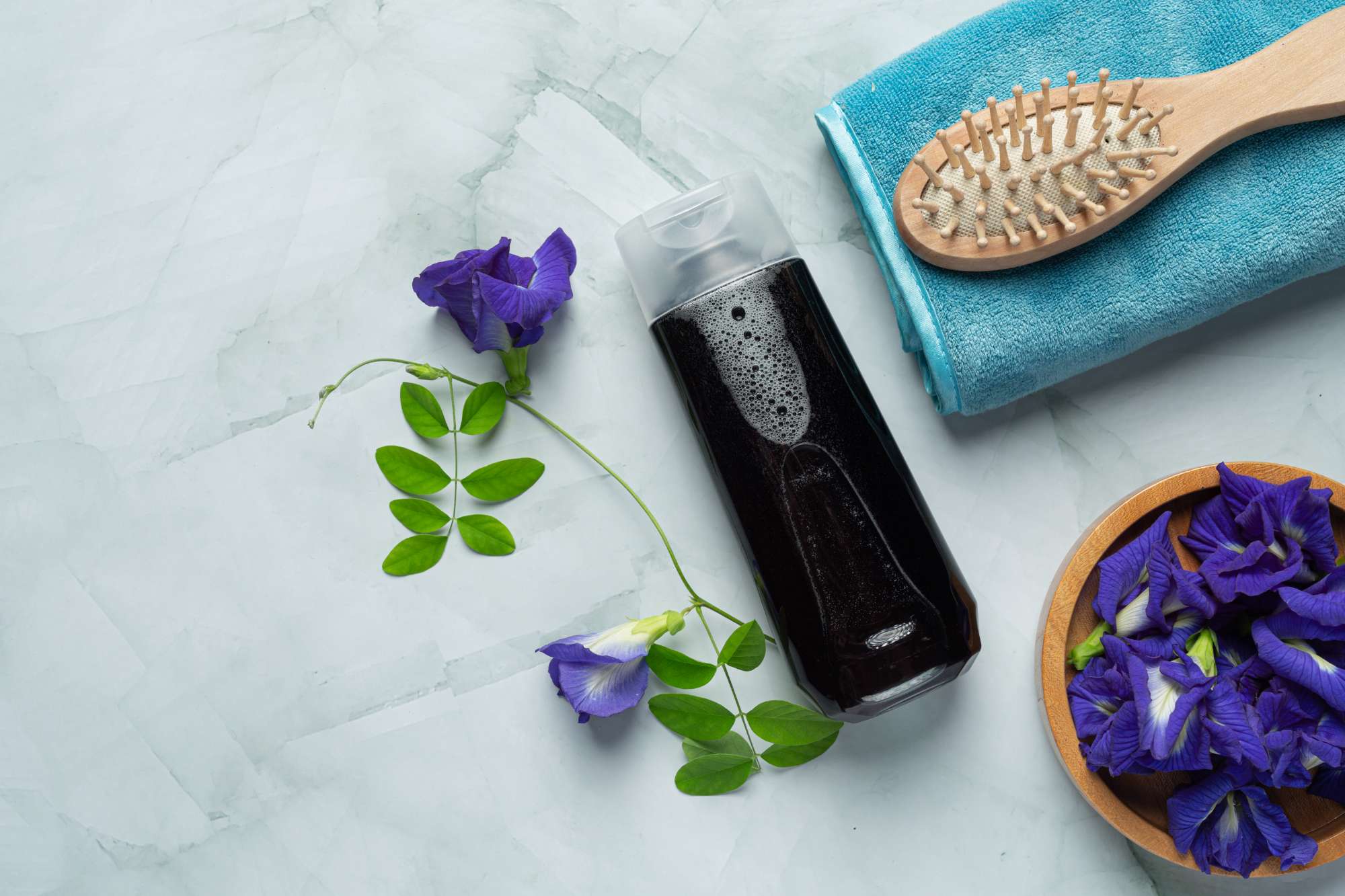
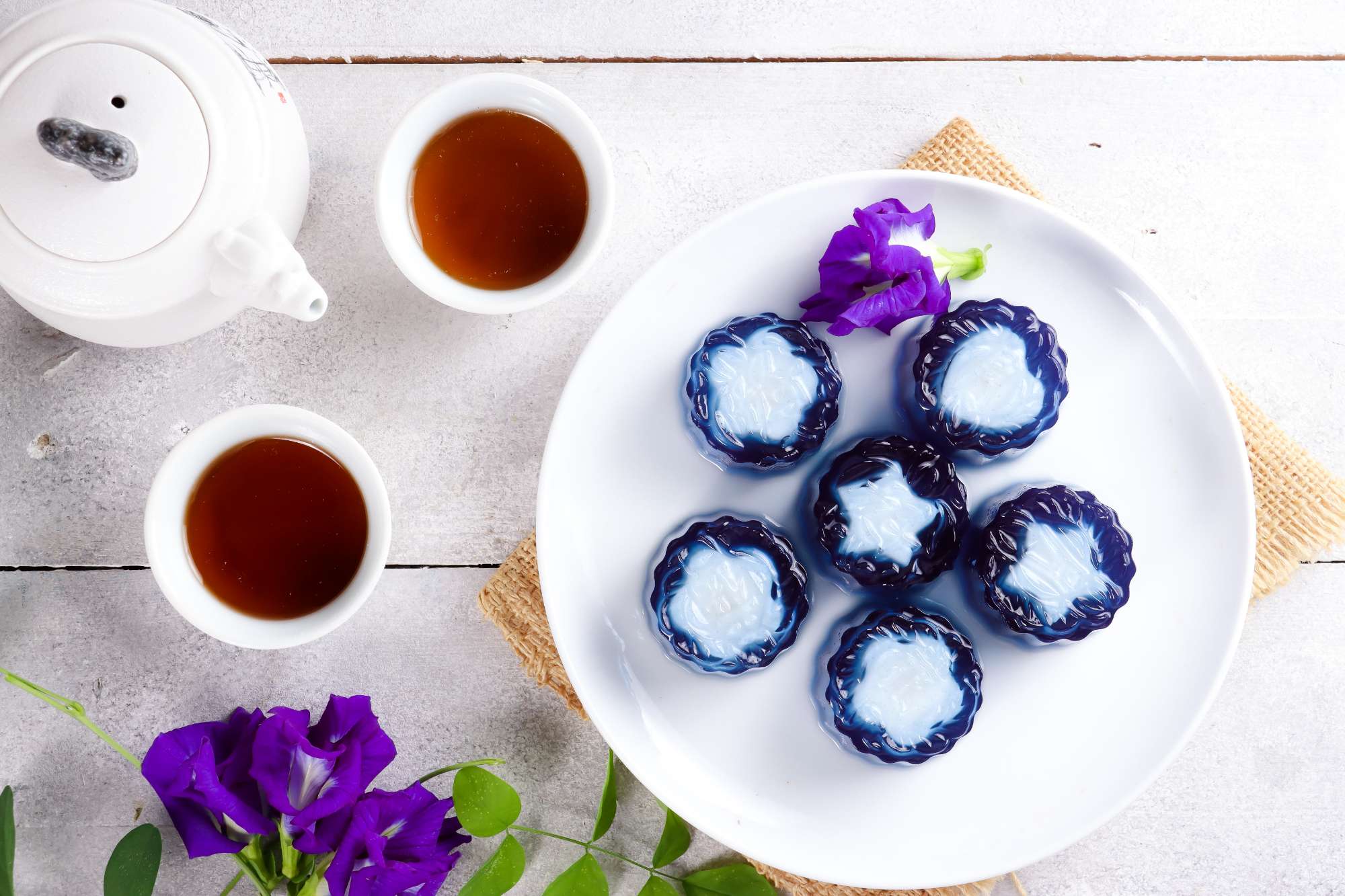

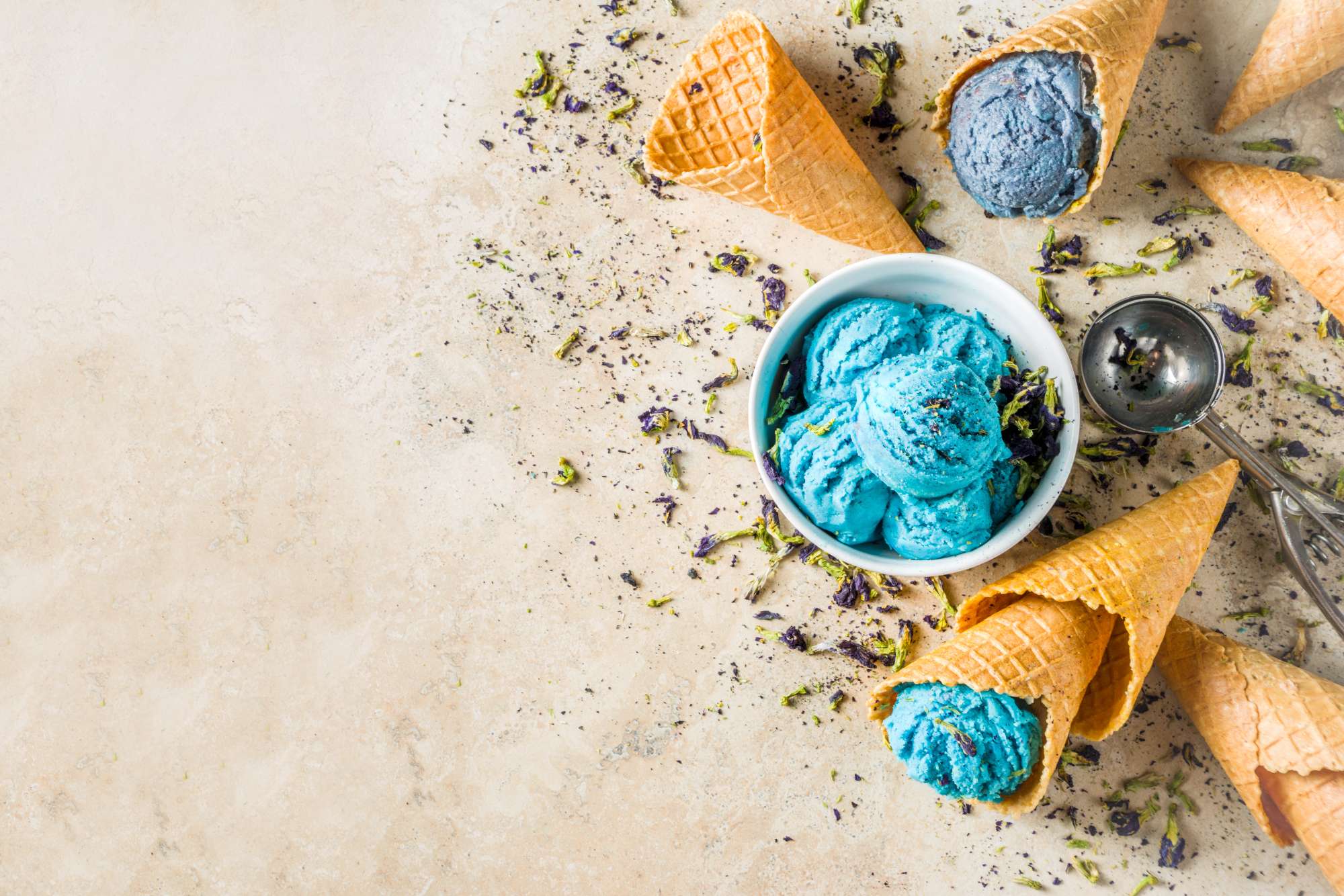
Does butterfly pea flower have any side effects?
Butterfly pea flower is considered safe when used in moderation. Using too much can cause nausea, stomach upset and diarrhea. Although there are no studies on its side effects, some people have reported problems such as nausea, stomach pain, and diarrhea. If you have an underlying medical condition or are taking any medications, you should talk to your doctor before using butterfly pea flower or other herbal products.
What are the harmful effects of butterfly pea roots and seeds?
In the butterfly pea plant, the roots and seeds contain a small amount of poison to prepare bleach, enema, medicine or snakebite, insect bite medicine, etc. Eating the wrong flower seeds can cause nausea, and for other people, With flowers, there are no poisons.
According to research, the butterfly pea seed has 12% oil composition. This substance is not recommended because it can cause poisoning when accidentally swallowed. Therefore, using butterfly peas to eat will affect health, especially for young children and people with poor resistance.
When eating butterfly peas, you may experience some symptoms such as vomiting and diarrhea. This phenomenon is the reaction from the oil in the seed secreted. So keep children away from butterfly peas to limit the risk of them swallowing them.
Harm for pregnant women
Pregnant women should be careful when using butterfly peas. The seeds of the flower contain anthocyanin, which causes uterine contractions, which affects pregnancy. Therefore, pregnant women should be careful when using this flower, if you want to use it, you should pay attention to whether the flowers contain seeds or not.
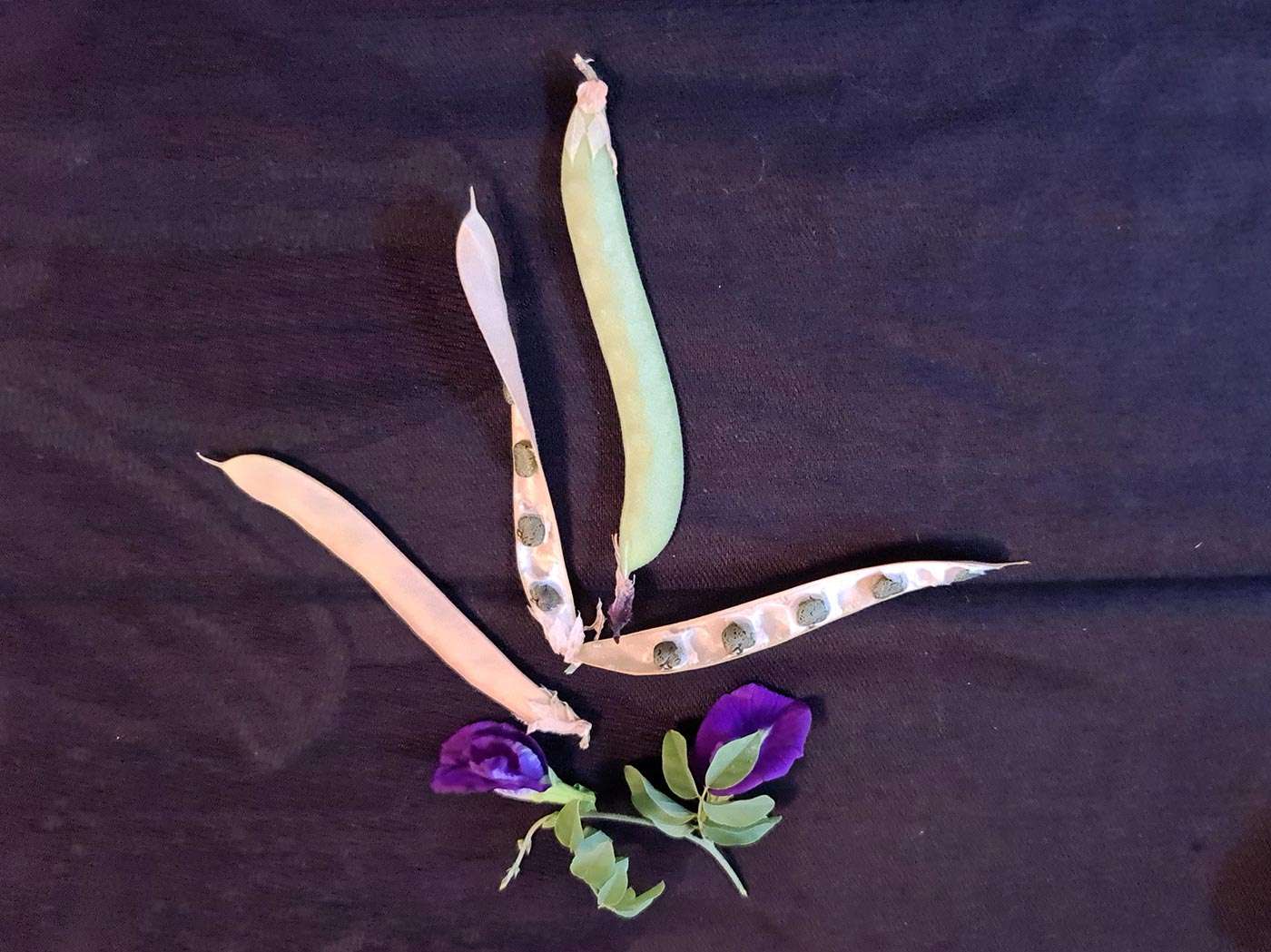
Compiled and penned by Crocus Media
.jpg)
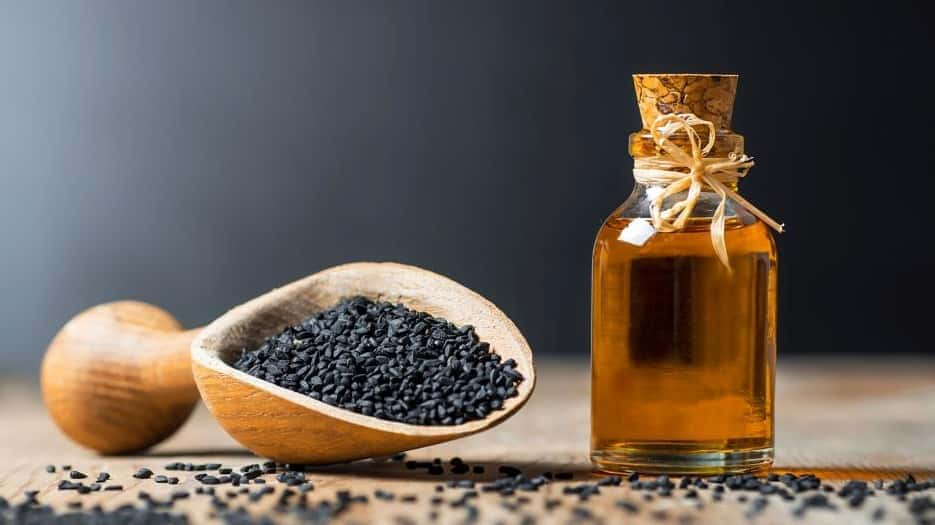
_1.jpg)